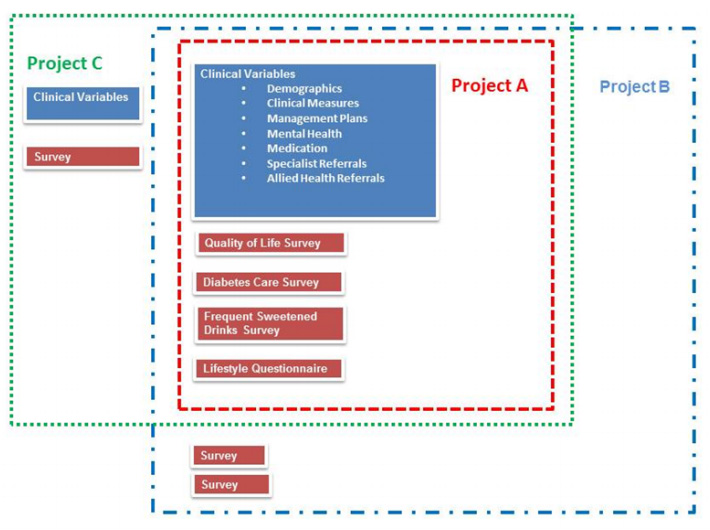Difference between revisions of "Template:Article of the week"
Shawndouglas (talk | contribs) (Updated article of the week text.) |
Shawndouglas (talk | contribs) (Updated article of the week text.) |
||
| Line 1: | Line 1: | ||
<div style="float: left; margin: 0.5em 0.9em 0.4em 0em;">[[File: | <div style="float: left; margin: 0.5em 0.9em 0.4em 0em;">[[File:Fig3 vanGanns eJHI2015 9-1.jpg|240px]]</div> | ||
'''"[[Journal:The | '''"[[Journal:The development of the Public Health Research Data Management System|The development of the Public Health Research Data Management System]]"''' | ||
The design and development of the Public Health Research Data Management System highlights how it is possible to construct an [[information]] system, which allows greater access to well, preserved public health research data to enable it to be reused and shared. The Public Health Research Data Management System (PHRDMS) manages clinical, health service, community and survey research data within a secure web environment. The conceptual model under pinning the PHRDMS is based on three main entities: participant, community and health service. The PHRDMS was designed to provide data management to allow for data sharing and reuse. The system has been designed to enable rigorous research and ensure that: data that are unmanaged be managed, data that are disconnected be connected, data that are invisible be findable, data that are single use be reusable, within a structured collection. The PHRDMS is currently used by researchers to answer a broad range of policy relevant questions, including monitoring incidence of renal disease, cardiovascular disease, diabetes and mental health problems in different risk groups. ('''[[Journal:The development of the Public Health Research Data Management System|Full article...]]''')<br /> | |||
<br /> | <br /> | ||
''Recently featured'': | ''Recently featured'': | ||
* [[Journal:The need for informatics to support forensic pathology and death investigation|The need for informatics to support forensic pathology and death investigation]] | |||
* [[Journal:Efficient sample tracking with OpenLabFramework|Efficient sample tracking with OpenLabFramework]] | * [[Journal:Efficient sample tracking with OpenLabFramework|Efficient sample tracking with OpenLabFramework]] | ||
* [[Journal:Design, implementation and operation of a multimodality research imaging informatics repository|Design, implementation and operation of a multimodality research imaging informatics repository]] | * [[Journal:Design, implementation and operation of a multimodality research imaging informatics repository|Design, implementation and operation of a multimodality research imaging informatics repository]] | ||
Revision as of 15:56, 4 April 2016
"The development of the Public Health Research Data Management System"
The design and development of the Public Health Research Data Management System highlights how it is possible to construct an information system, which allows greater access to well, preserved public health research data to enable it to be reused and shared. The Public Health Research Data Management System (PHRDMS) manages clinical, health service, community and survey research data within a secure web environment. The conceptual model under pinning the PHRDMS is based on three main entities: participant, community and health service. The PHRDMS was designed to provide data management to allow for data sharing and reuse. The system has been designed to enable rigorous research and ensure that: data that are unmanaged be managed, data that are disconnected be connected, data that are invisible be findable, data that are single use be reusable, within a structured collection. The PHRDMS is currently used by researchers to answer a broad range of policy relevant questions, including monitoring incidence of renal disease, cardiovascular disease, diabetes and mental health problems in different risk groups. (Full article...)
Recently featured:










